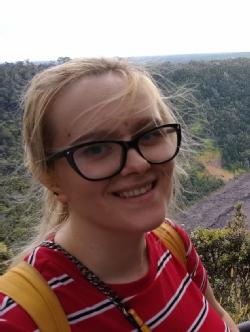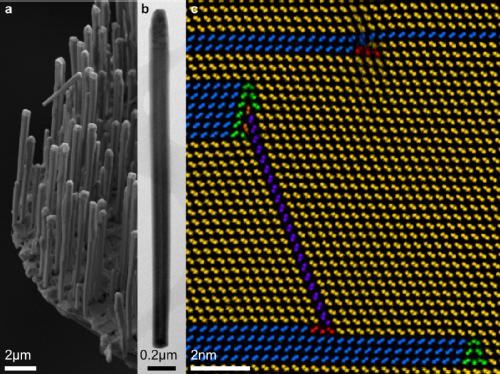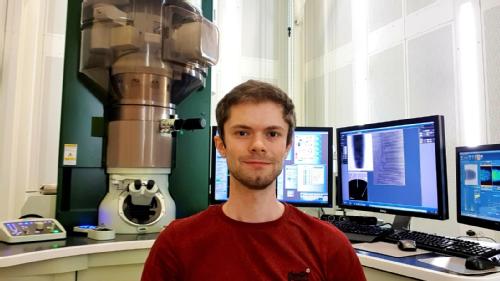2021
Many congratulations to Elena Cukanovaite,James Gott and Samuele Ferracin, for their success in the 2021 PhD Thesis Prize competition. Read on for more information about their research and its importance.

Winton Prize-Elena Cukanovaite
Elena Cukanovaite was awarded the Winton Prize for Astrophysics, for her doctoral thesis on "3D atmospheric models of helium-dominated atmosphere white dwarfs". Elena, who is currently working as a postdoc in theAstrophysics & Astronomy groupLink opens in a new windowLink opens in a new windowat Warwick, writes:"During my PhD I used powerful computers to recreate the atmospheres of dead stars. These remnant stars are known as white dwarfs, and they are the leftover cores of stars that have died after exhausting their life fuel. Roughly 97% of all stars in the Milky Way galaxy are destined to become white dwarfs, including our own Sun. Therefore, white dwarfs are incredibly important objects when trying to understand the evolution of stars, and planetary systems like our own solar system. Recent discoveries of planets and planetesimals around several white dwarfs have shown that planetary systems can in fact survive the death of their host star.
To be able to extract all this information from white dwarfs, we need to understand the observations we obtain for white dwarfs. Most of the information we can get from stars comes in the form of light, which has been generated in their atmospheres and travelled to us through the fabric of space. Thus, for us to be able to interpret this data, we need to be able to model stellar atmospheres correctly. By comparing our models with observed data, we can extract fundamental parameters of white dwarfs.
The astronomical community have had atmospheric models of white dwarfs for many decades, but with faster and better computers, we have been able to create more realistic models. The major improvements of the models I have created is in terms of their dimensionality. Before 2011, only 1D models were used for white dwarfs. However, we all know that we live in a 3D world, and thus using 1D models is simply not very realistic. During my PhD, I have modelled the atmospheres of a specific type of a white dwarf for the first time in 3D. This has allowed me to collect more accurate information on white dwarfs and thus improve studies of exoplanets, galactic evolution and beyond."
 |
 |
SEM Faculty Thesis Prize- Samuele Ferracin
Samuele Ferracin was awarded the Faculty of Science and Department of Physics Thesis Prize, for his doctoral thesis "Devising accreditation protocols for near-term quantum computing devices". Sam explained: "The past few years have seen unprecedented advances in the development of quantum computers. These fascinating devices promise to boost our computational capabilities well beyond their current limits. However, due to the quantum nature of their internal components, they suffer non-negligible levels of noise and their outputs are unreliable. As the available quantum computers rapidly grow in size and become harder to simulate on “classical” computers, finding methods to characterize their performance is a task of timely importance.
During my PhD I focused on finding schemes to verify the correctness of the outputs of noisy quantum computers. Together with my supervisor and some colleagues I developed a protocol to assess how close the “noisy” outputs are to the correct ones. Importantly, our protocol does not require classical simulation of quantum computations and is fully scalable for the long term. In collaboration with a research team at IBM we have tested this protocol on two experimental devices, demonstrating the effectiveness of our method as well as its practicality."
Many congratulations to Sam on this prize! Sam is currently a postdoctoral researcher at the University of WaterlooLink opens in a new windowLink opens in a new window, Canada.
Springer Thesis Prize-James Gott
James Gott is this year's winner of the Springer Thesis Prize for his doctoral study on "Defects in Self-Catalysed III-V Nanowires". James, who is currently a postdoc in the Condensed Matter cluster, explains:
"Semiconductor nanowires are a candidate for next generation technology due to superior properties enabled by their geometry. Current semiconductor devices are limited in choice of material combinations due to the unavoidable formation of imperfections during growth. The size and shape of nanowires allows growth of perfect crystals using a wider range of material combinations due to more efficient strain relaxation. However, perfectly optimised growth is rare and imperfections can, and do, still occur in nanowires. Imperfections, such as planar defects or diffuse interfaces, diminish device performance and need to be understood.
In my thesis I present an in-depth study into imperfections that can be found in self-catalysed III-V semiconductor nanowires. By utilising the advanced electron microscopy facilities at Warwick, I analysed interface sharpness and defects at the atomic and macroscopic scale. I discovered that a surprising variety and quantity of defect structures can exist in nanowire systems, and they can in fact host some never-before-seen defect configurations. To probe how these defects are formed, conditions during nanowire growth can be emulated inside the microscope using the latest generation of in-situ heating holder. This allowed me to examine defect formation, dynamics, and removal, revealing that many of the defects can in fact be removed. This information is critical for attaining perfect nanowire growth and presents annealing strategies to improve crystal quality, and therefore device performance.
The work in my thesis helps us to understand how we can better engineer nanowires for improved device performance in current and future applications. This helps boost the pursuit of increasing transistor density beyond the limit set by Moore’s law."
 |
 |
